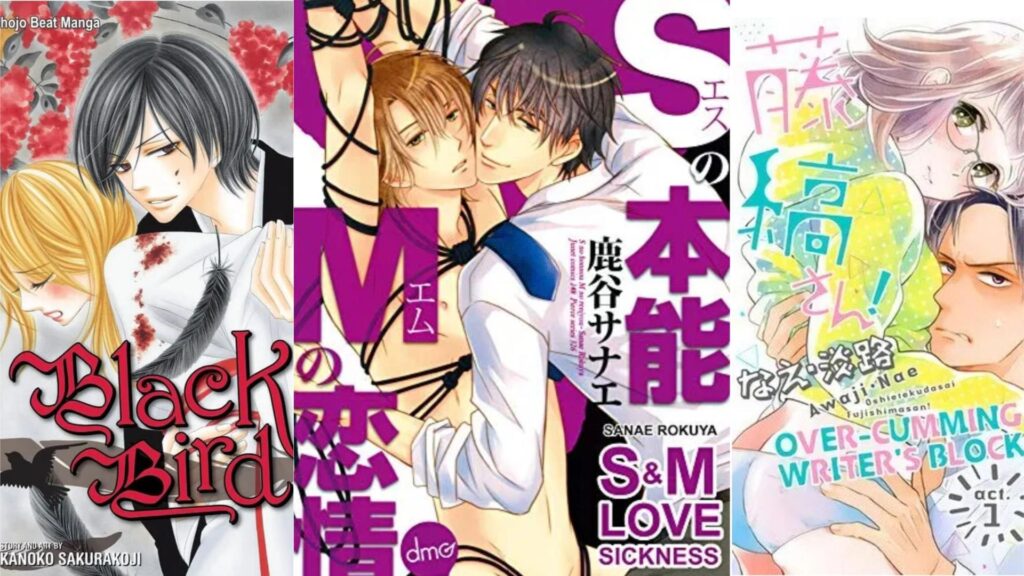In the vast and diverse landscape of manga, there exists a genre that pushes the boundaries of societal norms and explores the depths of human desire: smut manga. This genre, characterized by its explicit content and often mature themes, has garnered both fascination and controversy. From its roots in Japan to its global impact, smut manga serves as a window into the complexities of human sexuality, cultural attitudes, and artistic expression.
Understanding Smut Manga
Smut manga, also known as adult manga or hentai, encompasses a wide range of stories and art styles that focus on explicit sexual content. Unlike mainstream manga, which caters to various age groups and interests, smut manga targets mature audiences and delves into themes such as romance, erotica, BDSM, and sometimes even taboo subjects like incest or non-consensual scenarios.
What distinguishes smut manga is not just its graphic depictions of sex, but also its exploration of human emotions, relationships, and fantasies. While some may dismiss it as mere pornography, smut manga often offers complex characters, intricate plots, and thought-provoking narratives that delve into the intricacies of desire, power dynamics, and intimacy.
Cultural Context
To truly understand smut manga, one must delve into its cultural context within Japan. Japan has a long history of erotic art and literature, dating back centuries to the Edo period with works like “The Tale of Genji” by Murasaki Shikibu. This tradition continued into the modern era with the rise of manga and anime, where artists began pushing the boundaries of censorship and societal norms.
The post-World War II era saw significant changes in Japanese society, including the relaxation of censorship laws and the emergence of a more sexually liberated culture. This provided fertile ground for the growth of smut manga, which found its niche in the underground manga scene before gaining more mainstream acceptance over time.
However, despite its popularity, smut manga remains a controversial subject in Japan. While it is widely consumed and available in various forms, including magazines, books, and digital platforms, it still carries a stigma attached to it. Discussions about the genre often spark debates about morality, censorship, and the portrayal of women in media.
Artistic Expression
One aspect of smut manga that often gets overlooked is its artistic merit. Many smut mang’a artists possess incredible talent and skill, capable of creating breathtaking illustrations that evoke powerful emotions. From delicate character designs to elaborate backgrounds, the artistry in smut mang’a is a testament to the creativity and craftsmanship of its creators.
Moreover, smut mang’a provides artists with a platform to explore unconventional art styles and storytelling techniques. Freed from the constraints of mainstream expectations, they can experiment with different visual motifs, narrative structures, and thematic elements, pushing the boundaries of what is considered acceptable in art.
Impact and Influence
The influence of smut manga extends far beyond its native shores, reaching audiences around the world. With the globalization of manga and anime, smut mang’a has found a dedicated fan base in countries like the United States, Europe, and beyond. This global reach has sparked cultural exchanges and collaborations, leading to the adaptation of smut mang’a into various other forms of media, including live-action films, video games, and merchandise.
However, the spread of smut mang’a has also led to concerns about cultural appropriation and misrepresentation. Western audiences may not always fully grasp the cultural nuances and context behind smut manga, leading to misunderstandings and stereotypes about Japanese sexuality and culture.
Challenges and Controversies
Despite its popularity, smut mang’a continues to face challenges and controversies, both within Japan and abroad. Issues such as censorship, piracy, and ethical concerns surrounding the depiction of sensitive topics remain prevalent. Additionally, the rise of digital platforms and online communities has led to debates about regulation and the protection of minors from explicit content.
Moreover, the portrayal of gender and sexuality in smut mang’a has come under scrutiny, with critics arguing that it often perpetuates harmful stereotypes and unrealistic expectations. Discussions about consent, diversity, and representation have prompted calls for greater accountability and responsibility within the industry.
Conclusion
Smut manga occupies a unique and complex position within the world of manga and anime. It serves as a reflection of societal attitudes towards sexuality, censorship, and artistic expression, while also challenging conventional norms and boundaries. Despite its controversies, smut mang’a continues to captivate audiences with its compelling stories, stunning artwork, and unapologetic exploration of human desire.
As the global manga community continues to evolve, smut mang’a will undoubtedly remain a prominent and influential genre, shaping conversations about culture, identity, and the human experience for years to come. Whether viewed as a form of art, entertainment, or social commentary, smut manga invites us to confront our preconceptions and delve into the depths of human passion and imagination.







